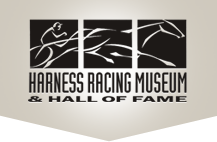
edward troye
Edward Troye, born in Switzerland on July 12, 1808 to French parents, was one of the foremost painters of horses in the nineteenth century. Showing an early interest in art, he received instruction in drawing and painting in England before immigrating to America in 1831. Struggling with his art career, he began work as a magazine illustrator. The following year, at the age of twenty-three, Troye submitted three paintings to the annual exhibition at the Pennsylvania Academy of Fine Arts. As a result, he was able to attract his first commission from Thoroughbred breeding giant John Charles Craig of Carlton Farm in Pennsylvania. This relationship proved itself very profitable for Troye since it gained him an introduction not only to racing at Long Island’s Union Course but also, more crucially, to the affluent racehorse owners who provided him with commissions for the next four decades. Troye gained more renown through his work for The American Turf Register and Sporting Magazine, the nation’s first sporting periodical. Twenty-one of his paintings were chosen to be frontispieces for this new magazine devoted to sports ranging from badger hunting to horse racing.
Following his marriage to Miss Cornelia Ann Van de Graff in 1839, Troye settled in her home state of Kentucky and in 1844 Anna Troye, the couple’s only child to survive infancy, was born. Flourishing amidst the state’s rich horse-breeding culture, Troye devoted a majority of his time to horse portraiture. Painting in the pre-photography era, Troye provided the trotting and Thoroughbred communities with expertly crafted portraits. Without them the world might not have had a visual record of trotting horses that include Abdallah, Belmont, Dexter, Dictator and Mambrino Pilot and Thoroughbreds Lexington, Glencoe and American Eclipse. Troye is believed to have painted more than 350 horses, mainly racehorses from across the Southern states, during his career.
In 1849 Troye accepted a teaching position at Spring Hill College in Mobile, Alabama, where he served as a professor of painting and French. In 1855 he left the college to travel through Europe and the Near East with his friend Alexander Keene Richards of Blue Grass Park in Georgetown, Kentucky. Along the way Troye painted portraits of Arabian horses as well as landscapes of Syria and the Holy Land. When he returned home eighteen months later, Troye began work on a book titled The Race Horse of America, which was eventually published in 1867.
In preparation for his retirement, Troye purchased a farm in Owens Crossroads, Alabama in 1869. While he tried his hand at farming, Troye maintained his skill with the paintbrush in part thanks to Alexander Richards’ willingness to provide his friend with a circular studio and furnished room at his farm. During one of his regular visits to Richards’ home, Troye died quite unexpectedly on July 25, 1874 following a case of pneumonia. He was sixty-six.

